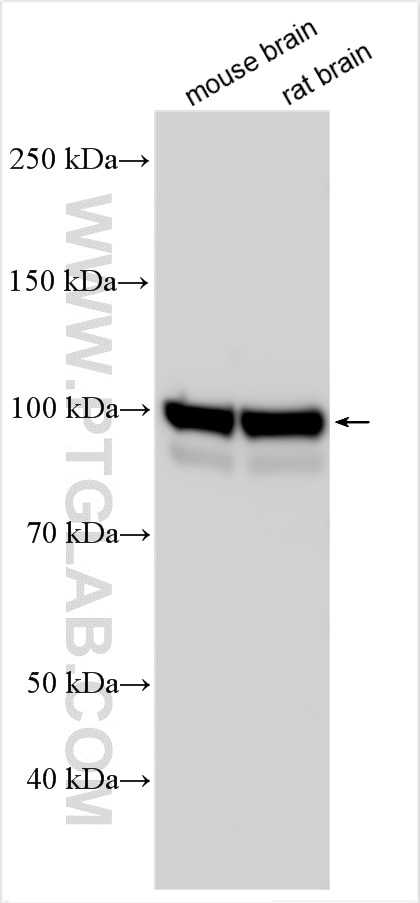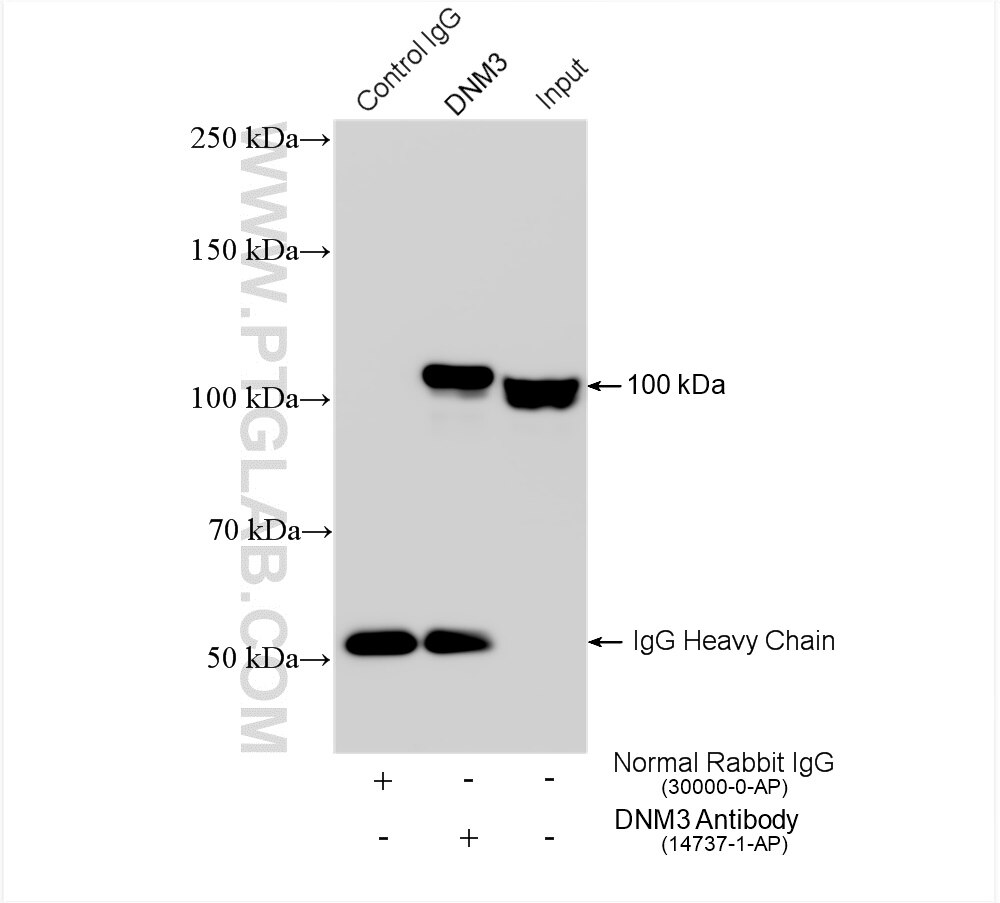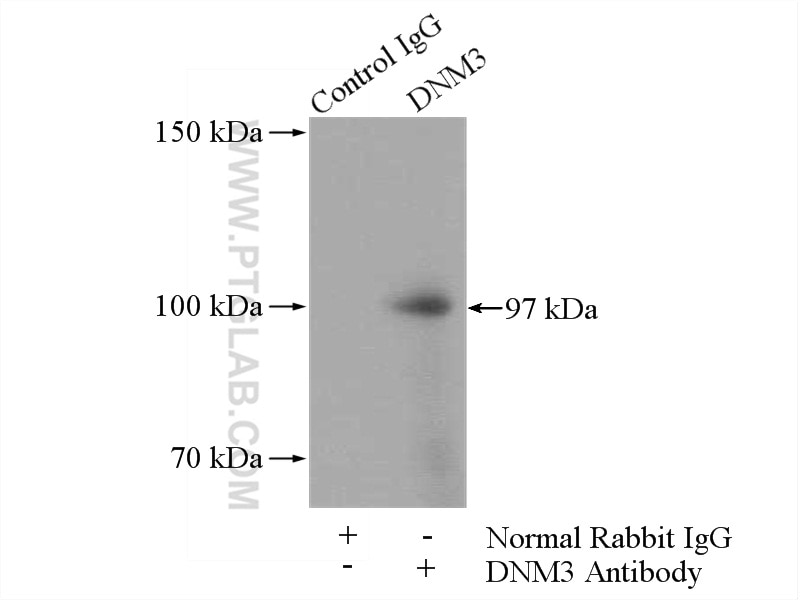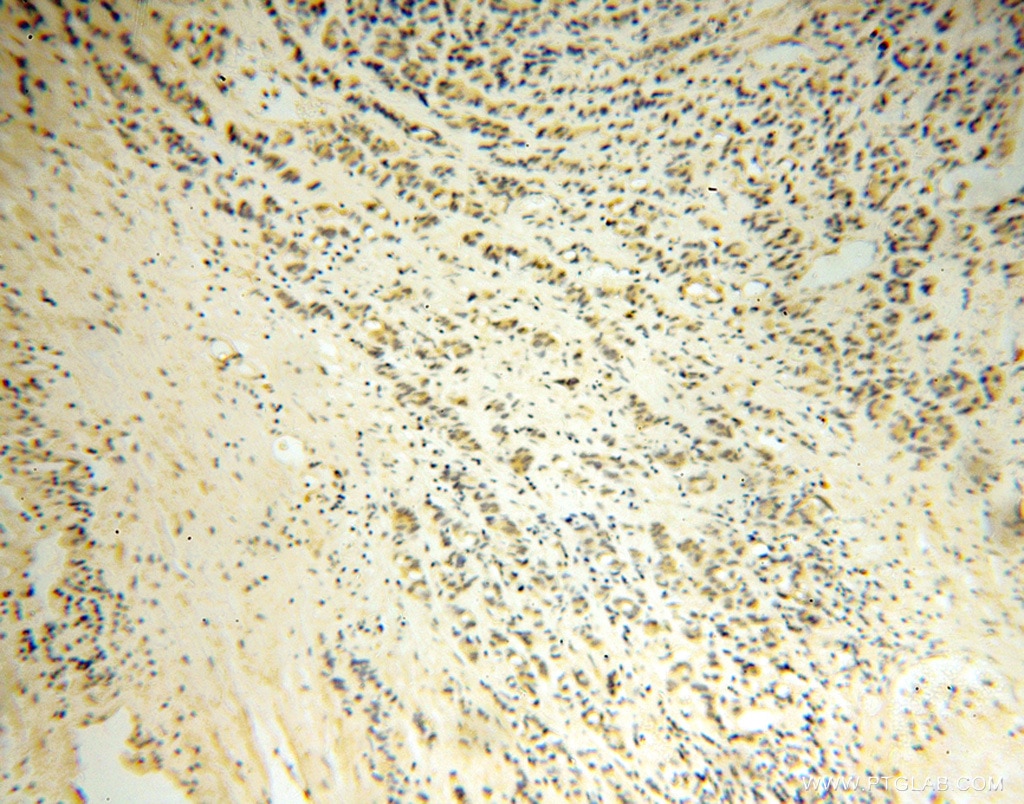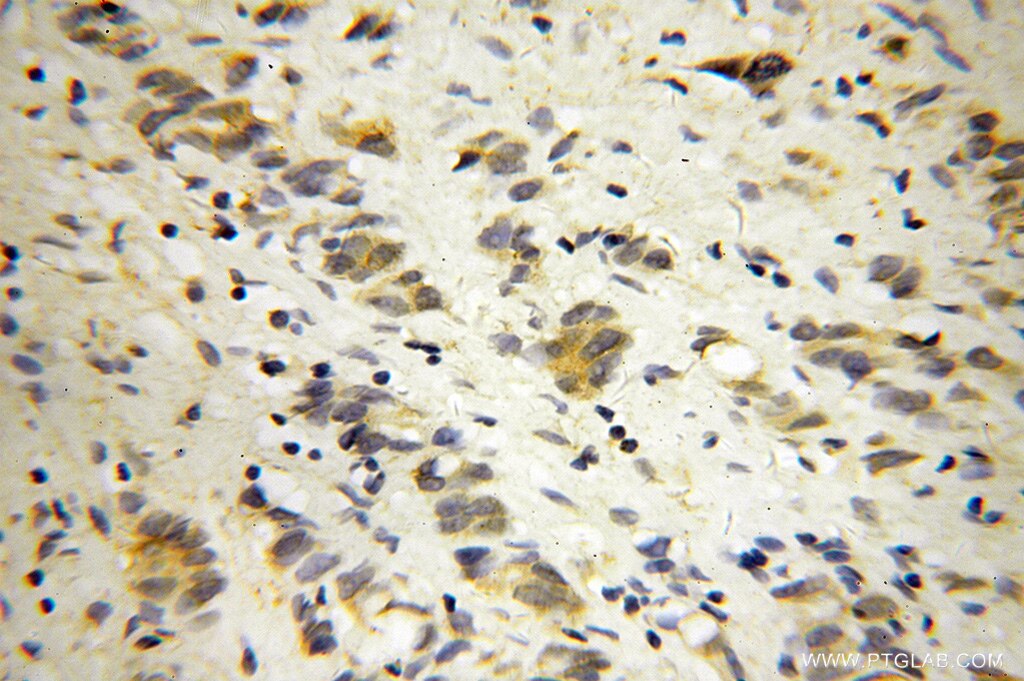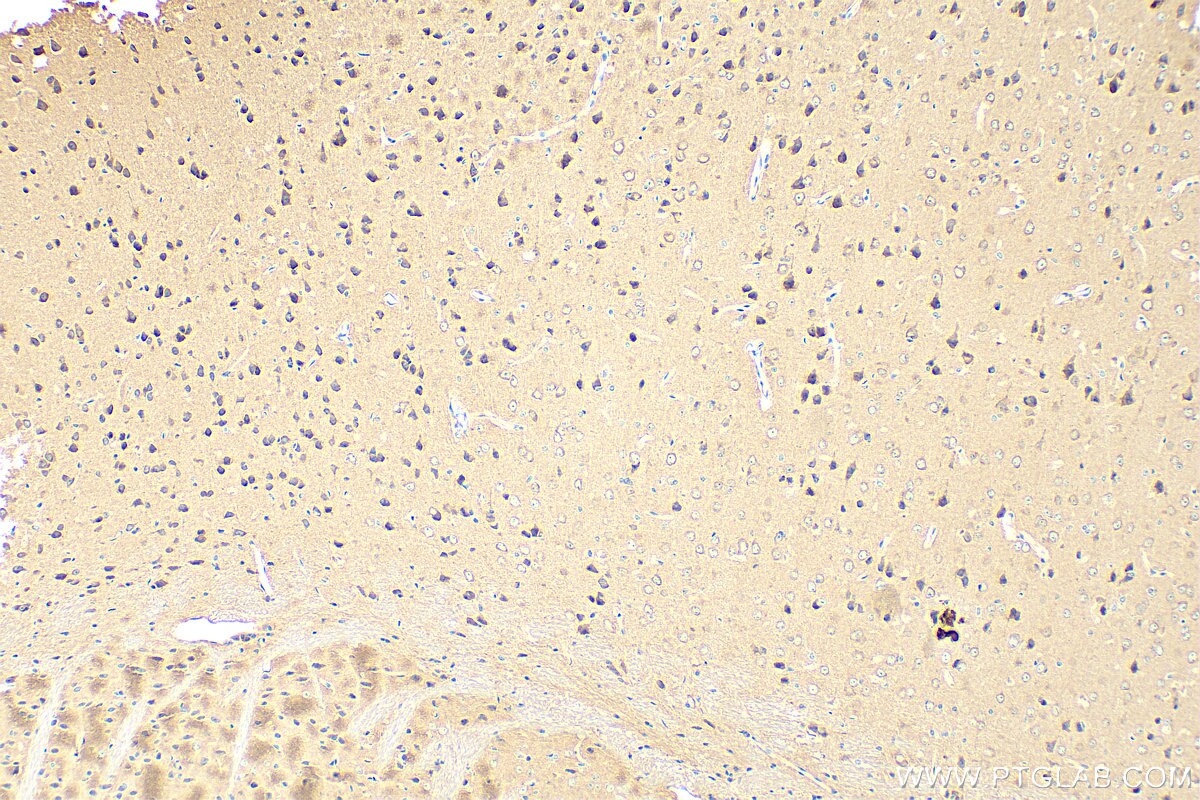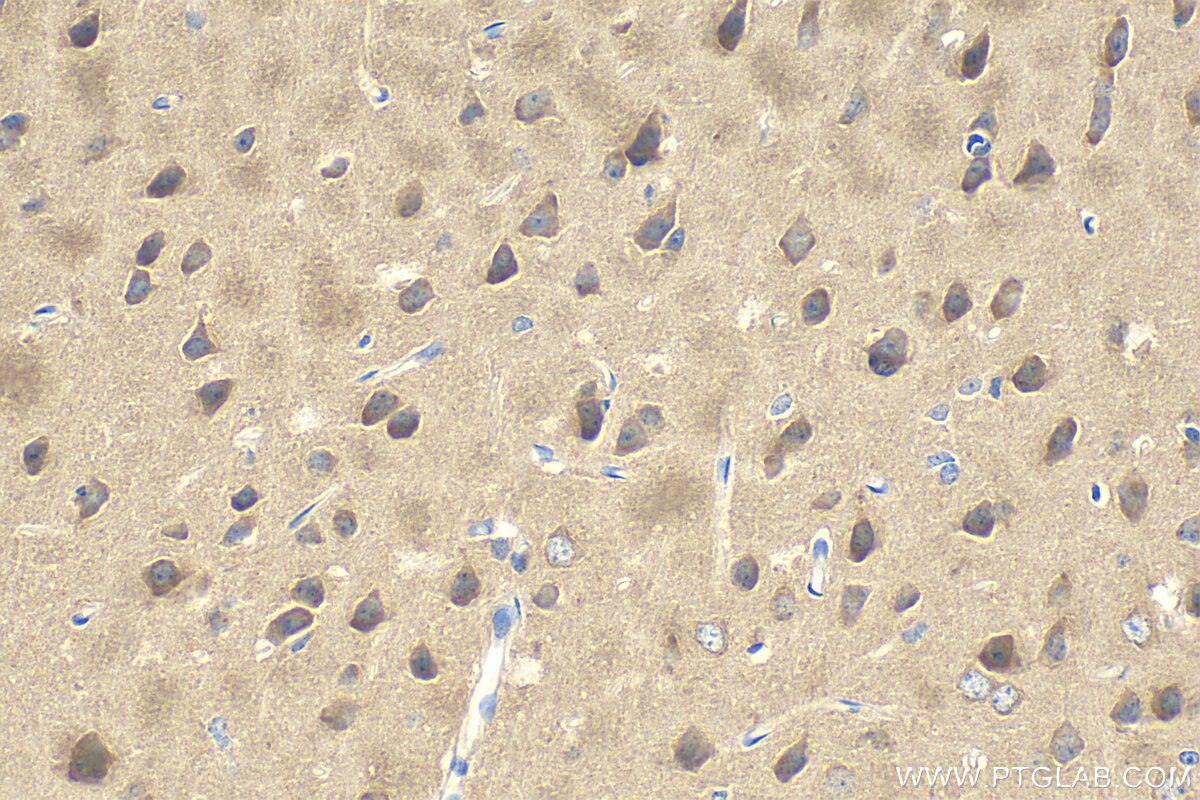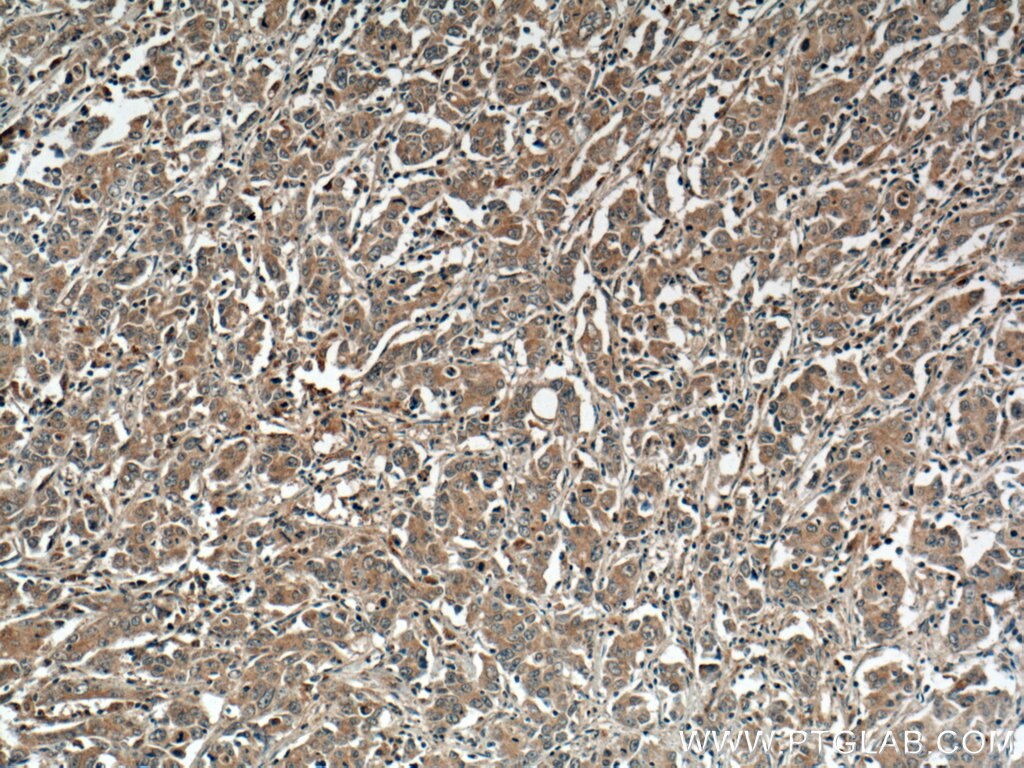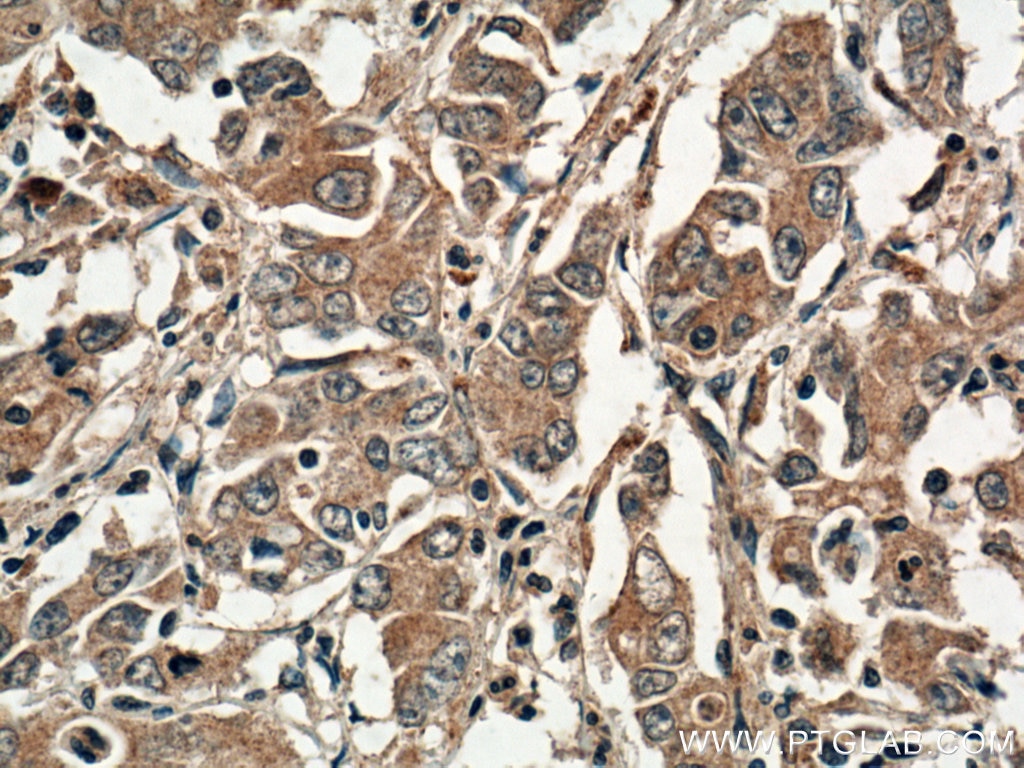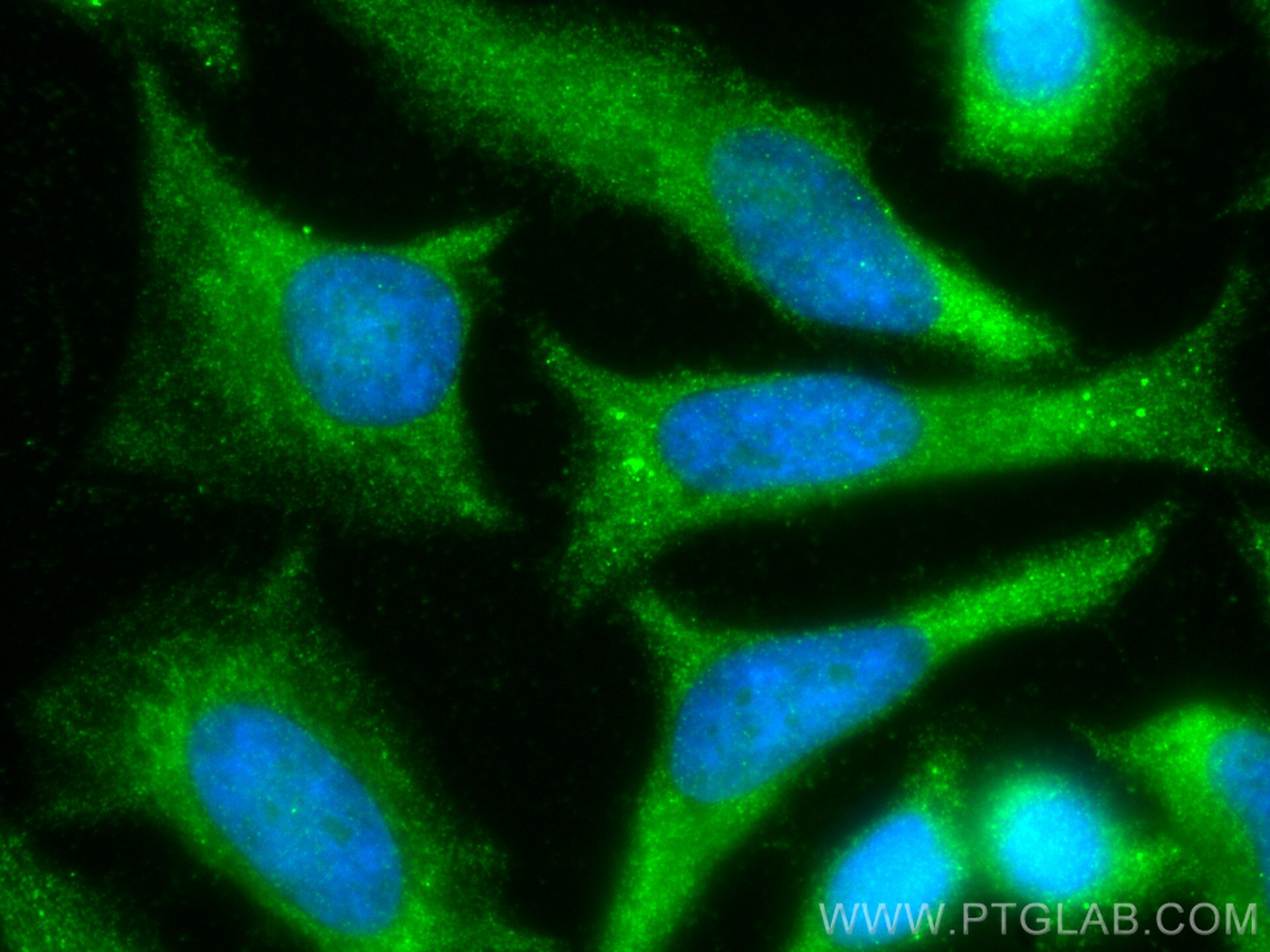- Phare
- Validé par KD/KO
Anticorps Polyclonal de lapin anti-DNM3
DNM3 Polyclonal Antibody for WB, IP, IF, IHC, ELISA
Hôte / Isotype
Lapin / IgG
Réactivité testée
Humain, rat, souris
Applications
WB, IHC, IF/ICC, IP, ELISA
Conjugaison
Non conjugué
N° de cat : 14737-1-AP
Synonymes
Galerie de données de validation
Applications testées
| Résultats positifs en WB | tissu cérébral de souris, tissu cérébral de rat |
| Résultats positifs en IP | tissu cérébral de souris, |
| Résultats positifs en IHC | tissu cérébral de souris, tissu de cancer de l'estomac humain, tissu de gliome humain il est suggéré de démasquer l'antigène avec un tampon de TE buffer pH 9.0; (*) À défaut, 'le démasquage de l'antigène peut être 'effectué avec un tampon citrate pH 6,0. |
| Résultats positifs en IF/ICC | cellules HeLa, |
Dilution recommandée
| Application | Dilution |
|---|---|
| Western Blot (WB) | WB : 1:2000-1:12000 |
| Immunoprécipitation (IP) | IP : 0.5-4.0 ug for 1.0-3.0 mg of total protein lysate |
| Immunohistochimie (IHC) | IHC : 1:200-1:800 |
| Immunofluorescence (IF)/ICC | IF/ICC : 1:200-1:800 |
| It is recommended that this reagent should be titrated in each testing system to obtain optimal results. | |
| Sample-dependent, check data in validation data gallery | |
Applications publiées
| KD/KO | See 1 publications below |
| WB | See 5 publications below |
| IHC | See 2 publications below |
| IF | See 6 publications below |
Informations sur le produit
14737-1-AP cible DNM3 dans les applications de WB, IHC, IF/ICC, IP, ELISA et montre une réactivité avec des échantillons Humain, rat, souris
| Réactivité | Humain, rat, souris |
| Réactivité citée | Humain, souris |
| Hôte / Isotype | Lapin / IgG |
| Clonalité | Polyclonal |
| Type | Anticorps |
| Immunogène | DNM3 Protéine recombinante Ag6381 |
| Nom complet | dynamin 3 |
| Masse moléculaire calculée | 98 kDa |
| Poids moléculaire observé | 97-100 kDa |
| Numéro d’acquisition GenBank | BC064546 |
| Symbole du gène | DNM3 |
| Identification du gène (NCBI) | 26052 |
| Conjugaison | Non conjugué |
| Forme | Liquide |
| Méthode de purification | Purification par affinité contre l'antigène |
| Tampon de stockage | PBS avec azoture de sodium à 0,02 % et glycérol à 50 % pH 7,3 |
| Conditions de stockage | Stocker à -20°C. Stable pendant un an après l'expédition. L'aliquotage n'est pas nécessaire pour le stockage à -20oC Les 20ul contiennent 0,1% de BSA. |
Informations générales
DNM3 (dynamin 3) is a member of dynamin proteins that participate in membrane rearrangements such as vesicular trafficking and phaocytosis. Three dynamin proteins encoded by different genes are present in mammals: DNM1 is mainly expressed in central nervous system, DNM2 ubiquitously expressed, and DNM3 expressed chiefly in the testis and brain. Western blot using this antibody specifically detected the 100 kDa DNM3 in mouse brain. It doesn't cross-react with other DNMs. (22977254, 21671749)
Protocole
| Product Specific Protocols | |
|---|---|
| WB protocol for DNM3 antibody 14737-1-AP | Download protocol |
| IHC protocol for DNM3 antibody 14737-1-AP | Download protocol |
| IF protocol for DNM3 antibody 14737-1-AP | Download protocol |
| IP protocol for DNM3 antibody 14737-1-AP | Download protocol |
| Standard Protocols | |
|---|---|
| Click here to view our Standard Protocols |
Publications
| Species | Application | Title |
|---|---|---|
Mol Cell Proteomics Modification of Crocodile Spermatozoa Refutes the Tenet That Post-testicular Sperm Maturation Is Restricted To Mammals | ||
Mol Cell Proteomics Proteomic profiling of crocodile spermatozoa refutes the tenet that post-testicular maturation is restricted to mammals. | ||
J Biol Chem Dynamin regulates specific membrane fusion events necessary for acrosomal exocytosis in mouse spermatozoa. | ||
Mol Hum Reprod Characterization of a novel role for the dynamin mechanoenzymes in the regulation of human sperm acrosomal exocytosis. | ||
Clin Exp Metastasis Identification and validation of genes with expression patterns inverse to multiple metastasis suppressor genes in breast cancer cell lines.
| ||
Biol Reprod Developmental expression of the dynamin family of mechanoenzymes in the mouse epididymis. |
